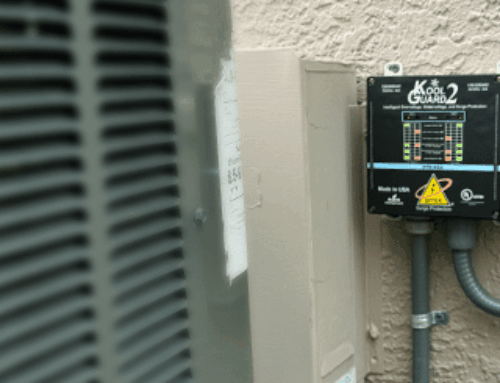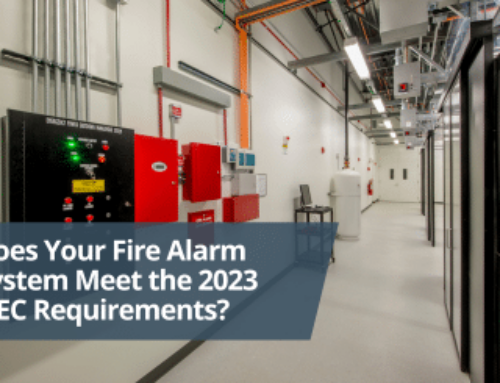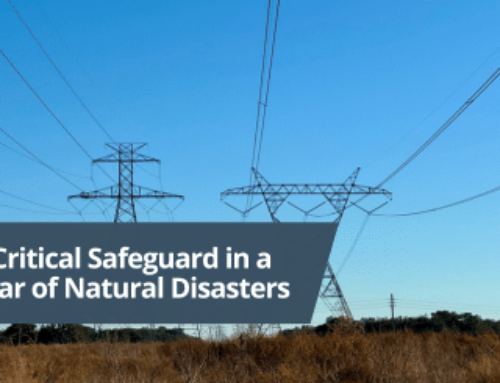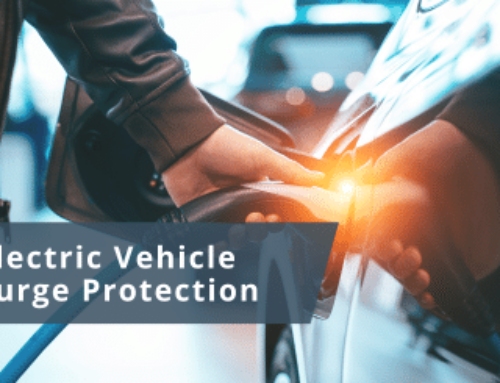Every commercial, industrial, and residential facility relies on electrical and electronic equipment to perform their everyday functions. Learning how to properly protect these systems is essential to equipment reliability and longevity.
A common misconception about power surges is that electrical and electronic device are only at risk during extreme weather and lightning storms, but power surges happen all the time without warning – and usually without us even noticing! According to the Insurance Institute for Business and Home Safety, lightning strikes account for just two percent of all surge damage. That means that 98 percent of the damage is done by the hundreds of power surges that are mostly unnoticed every day.
These surges can be the result of something as simple as your air conditioner cycling on or off, or someone using a welder in a neighboring building. They could also be caused by something much farther away – for example, when electrical power plants are connected and disconnected from the grid, which happens frequently as power needs change during the course of a day. They can be caused by equipment failures, and by human error during maintenance and repair activities.
It is also very important to know that power surges are not limited to occurring only on power supply lines – they can jump over to data networks and communication lines and cause damage to these networks and connected devices as well.
Whether caused by internal or external factors, power surges are not something to be ignored or taken lightly.
Damage Caused by Electrical Surges
Electrical surges happen quickly – often, only a few milliseconds – and if your equipment isn’t properly protected, that tiny sliver of time could end up costing a lot of money.
Power surges can cause three kinds of losses for your business or home: the destruction of equipment, degradation of equipment, and downtime while the equipment is out of service. Of these three, downtime is the most costly effect. From a business perspective, the potential loss of data and downtime is far more expensive than the cost of the damaged equipment; and is typically not covered by your insurance policy.
While most power surges go unnoticed, they remain dangerous for your electronic systems. Repeated surges degrade your equipment, shortening their lifespan and increasing the risk of failures. Proper surge protection is usually a small fraction of the cost of the connected equipment – often less than the sales tax – and can protect against this kind of damage, extending equipment life and reducing the risk of unexpected failures.
Surge Protection Terminology
Learning basic surge protection terminology can help you to make an informed decision about what surge protection you might need. Here is a helpful glossary for your convenience.
Becoming familiar with these terms will give you a better understanding of how surge protectors operate, and help ensure that you choose the devices that work best for your vulnerable systems:
- Clamping level. The clamping level describes the maximum voltage level that will cause a surge protector to turn on and begin diverting the surge energy away from your connected equipment.
- Ground. Ground refers to any electrical connection to the earth, either directly, through a facility ground network, or through other means, such as a driven ground rod.
- Joule rating. The joule rating tells you how much energy the surge protector can absorb before it fails. There is no industry standard for joule rating—no two manufacturers rate their devices the same way. A more definitive measurement standard is Amp rating, which measures a device in maximum amps, which makes it easier to do an apples-to-apples comparison to other surge protectors.
- Let-through voltage. Let-through voltage is the amount of electricity that a surge protector will allow to pass through to the protected devices. The better the surge protector, the lower the let-through voltage.
- MCOV. MCOV, or maximum continuous operating voltage, is the highest amount of voltage the device will allow to pass through continuously, similar to an RMS (root mean square) rating.
- MLVs, SADs, and GDTs. Common components (metal-oxide varistors, silicon avalanche diodes, and gas discharge tubes) used in surge protection devices to divert surge energy away from the connected equipment.
- Operating voltage. This is the normal voltage of the protected electrical supply. For residential use, 120V and 240V are most common, but commercial facilities often use higher voltages. The surge protectors must match the normal operating voltage of the installation location.
- Response time. Response time is the amount of time it takes for the surge protection device to turn on and start diverting energy. Surge protection components typically have a reaction time 100 to 1000 times faster than the duration of a surge event.
- UL. Underwriters Laboratories, or UL, is the regulating body and safety agency for surge protective devices. Choosing devices with UL ratings provides assurance that the devices will operate properly per their specifications.
Added Features
Below is a listing of some added features that you may want to consider when preparing your surge protection plan:
- remote notification: Products equipped with dry contacts provide for remote notification to alert the responsible parties when service is required.
- Audible Alarms: Products equipped with audible alarms provide another way to alert responsible parties that service is required when owners or staff are located on premises.
- Rapid-Replacement Modules: Products equipped with rapid-replacement modules minimize protection downtime and simplify repairs by eliminating the need for making any electrical connections
Choosing the Right Provider
Choosing the right SPD for every installation can be much easier with the assistance of a knowledgeable provider. That’s why we are here and ready to help you make the best choices. DITEK’s products are manufactured in the USA and backed by comprehensive warranties of up to 10-years. With DITEK, you can be certain that you are installing the right type and level of protection for your devices to function and be sufficiently shielded from damaging effects of power surges and spikes.





